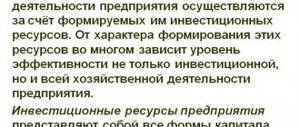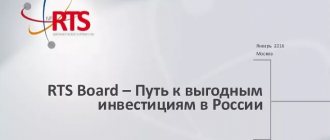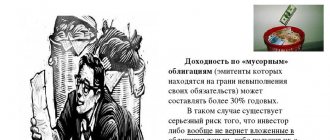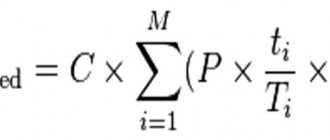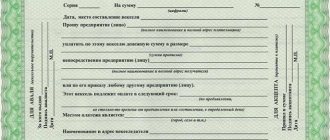All participants primary bond market The easiest way is to divide it into three large groups: this issuers, investors and financial intermediaries.
Issuers
The issuer or borrower in the primary market is the one who offers the investor to buy his bonds, that is, he borrows from the investor. Issuers of bonds can be a state, a federal subject, a city or the corporate sector.
The largest issuer on the Russian bond market is the state represented by the Russian Ministry of Finance. For example, in 2017, the Russian Ministry of Finance placed federal loan bonds (OFZ) for a total amount of 1.8 trillion rubles. so far attracted only 985 billion rubles from investors during initial placements of OFZs
The Ministry of Finance announces its plans for initial placements in advance, but reserves the right to adjust the schedule and volume of borrowings. Thus, in September, he did not hold a single auction for the placement of OFZ due to volatility government bonds to investors in the primary market for RUB 1.45 trillion
Source: Cbonds
The second major segment of the IPO is the corporate bond . This includes issues of banks and other financial institutions, as well as bonds of companies in the real sector, for which the primary bond market is one of the most important sources of financing for several reasons. Firstly, the amounts that a company can raise on the bond market are usually an order of magnitude higher than what an individual bank can provide as a loan. Additionally, the bond market often offers much more competitive rates for corporate borrowers . And the period for which long-term money can be borrowed profitably through bonds also exceeds the possibilities of bank lending . Another advantage of the primary bond market is that it allows the borrower (especially if we are talking about high-quality issuers with an established public credit history ) to raise funds in a fairly short time, much faster than in the case of bank loans.
Last year, corporate borrowers were able to place bonds totaling almost 2.9 trillion rubles on the primary
The activity of issuers in the primary market depends on many factors, including:
— the level of rates (the lower the rates on the market, the more profitable issuers can raise funds through the placement of bonds). In 2021, the Central Bank reduced the key rate : from 10% to 7.75%. One of the main reasons for the easing of the Central Bank's monetary policy was a sharp decline in inflation : by the end of the year it reached a historical minimum of 2.5% year-on-year;
— the level of liquidity in the system (the ability of the market to absorb securities at the existing price level). If banks have excess money, they are more actively willing to place it on the market, including buying bonds on the primary market;
— the general situation in the economy. If the economic situation is favorable, the business borrows more money, because companies have a need to invest it in development, and not just use it to refinance old debts ;
— external news background. When the situation on foreign markets is tense, this makes Russian investors more nervous. For example, in 2021, several countries with emerging markets , including Turkey, Argentina, Indonesia and others. Their currencies fell sharply against the dollar , and bond prices fell as investors rushed to sell off toxic assets. General nervousness affected the Russian ruble , and after it also bonds: the ruble weakened, bond prices fell, and yields rose .
If all of the above or at least several factors add up positively, supply and demand converge, then we speak of the appearance of “windows” for placement on the primary market. Typically, active issuers try to be prepared for such moments in order to take advantage of favorable conditions and raise money through bonds as profitably as possible. Read more about who the largest issuers on the Russian market are and why they borrow money here.
Investors
Investors are market participants who lend capital to issuers. In return, they expect to receive regular interest payments over the life of the loan, and that the issuer will repay all funds borrowed at a specified date in the future. The higher the risk investors take, the higher the reward the issuer must pay.
There are two main groups of investors:
— organizations or institutional investors
;
— individuals or private investors
.
Source: Moscow Exchange
The largest buyers of corporate bonds on the Russian primary market are management companies, banks and brokers. Their share accounts for about 75% of the market. The remaining volume is distributed between trust management accounts , individuals, foreign buyers ( non-residents ) and subsidiaries of foreign banks in Russia. However, recently corporate borrowers have been much more active in issuing bonds aimed specifically at retail buyers, that is, individuals, whose share in the structure of investors has been actively growing over the past few years. This means that private investors are seeking not only to invest in bonds by buying securities on the secondary market , but are also increasingly participating as buyers in initial offerings. Already, the number of active private investors in the primary market, according to Yango estimates, reaches several thousand people, and the average transaction size is several million.
The question arises, how do issuers raising capital find investors who want guaranteed income?
on your investments?
Intermediaries
The intermediaries operating in the bond market - investment banks , investment companies, brokers, market makers - are engaged in bringing together buyers and sellers and thereby ensuring transactions are carried out at a price favorable to all parties. They are also responsible for organizing the entire process of issuing bonds . Large international financial news agencies such as Bloomberg, Reuters, as well as the Russian news agency Cbonds regularly compile and publish ratings of banks organizing bond issues on the domestic market. These banks have so-called DCM divisions (Debt Capital Markets), which specialize in transactions for the primary issue of bonds for issuers. Large banks with large DCM divisions, as a rule, place mainly bonds for high-quality borrowers from 1-2 echelons. Such an organizer can simultaneously place several issues from different companies at once.
Source: Cbonds
In addition to the largest banks, which account for more than 80% of all bond placements in Russia, in recent years small investment companies have been actively developing in the investment banking market, which help place bonds with third-tier borrowers (including small and medium-sized companies capitalization ).
The size of the financial intermediary's commission that the borrower will pay may depend on the volume of the issue, the quality of the paper (whether it has ratings), and the terms of cooperation between the issuer and the bank on other products (loans, salary projects, etc.).
In theory, issuers of securities can themselves (without intermediaries) place their bonds on the primary market among investors. And there are such examples, although there are not many of them. However, in practice, in 90% of cases, borrowers still resort to the services of professional intermediaries. The complex mechanism for issuing bonds , competition for investors, and the need for guaranteed placement of securities still require professional skills.
What is the stock market and stock exchange
Stock markets perform specific functions.
They are designed for trading securities, stocks, bonds, shares of exchange-traded funds, etc. The players here can be large international corporations or individuals who have conditionally equal rights and opportunities. Transactions take place under strict legal support, transactions are registered and controlled. Conditions have been created for companies to finance production, and individuals have access to promising investments of accumulated funds.
The stock market is, in simple words, a place where there are no physical goods or services, but there is a representation of them in the form of securities of any kind.
However, this is only a concept, a term. The specific platform for making transactions is the stock exchange (SE). These concepts are often confused, although there is no fundamental mistake here. FR is a general concept that describes a phenomenon, while FB is a specific trading platform. To participate in trading, you need to know the basics of the stock market, otherwise you may end up with serious losses instead of profits.
Features of the stock market include increased trading risks. If when trading ordinary goods you can lose some part of your profit due to lack of quality, or a decrease in demand, then in FR you can lose everything at once. A fall in stock prices or depreciation of securities means a complete loss of assets, therefore, you must act carefully and carefully.
The history of the stock market knows a lot of examples when huge profits were made within one day, which disappeared as a result of a single unsuccessful operation. Therefore, you first need to learn everything about the stock market so as not to end up in a dire situation.
Connection with the secondary market
The main characteristic of the primary market of the Central Bank is that operations are carried out on it with new stock assets that have not yet been used anywhere. The acquirer has the right to hold the securities to receive dividends, but much more often they are resold repeatedly to obtain quick speculative profits. It is obvious that the primary market is closely connected with the secondary market and cannot exist without it.
Most transactions take place on the secondary asset market. The primary exchange only forms the initial “product”, which can then be in circulation for years. The activity and scale of activity of the primary market depend on the development of the secondary market and the level of supply and demand on it.
Another feature of the primary market of the Central Bank is the direct participation of issuers, while on the secondary market all transactions are carried out only between investors. The buyer of a stock can resell it almost instantly, and there are rarely sharp jumps in the value of individual securities, which makes speculative activity especially attractive - it is the basis of both markets.
Tasks and functions of the stock exchange
Let's look at what the securities market is in more detail.
The instrument for selling assets is the stock exchange where transactions take place. Since the main function of the securities market is to buy or sell, the principle of operation of the exchange differs little from ordinary organizations of this type.
The functions of the stock exchange are numerous and are designed to support transactions with securities:
- redistribution of capital ownership rights to companies and enterprises;
- reducing and covering the deficit;
- centralization of funds and assets;
- registration and re-registration of new holders;
- stimulating companies and industries.
The structure of the securities market is complex.
There are different types:
- the primary market, where shares or bonds are purchased directly from the issuer;
- secondary, where the movement of securities between holders occurs. This is the most extensive segment, filled with assets of companies and associations.
In addition, there are organized and unorganized markets. The first operates according to pre-adopted rules, the second is informal in nature, where the participants agree on all aspects of the transaction separately. As a rule, an organized market is considered an exchange market, operating on the basis of a stock exchange and subject to its rules. The unorganized market carries out transactions with securities that have not been registered on the stock exchange (listing).
The securities market in Russia is largely undervalued; its potential is significantly higher than its current level. Today the market follows global dynamics, but also has its own characteristics. The basic indicator of market conditions is the current oil price. The cost of other shares and other securities is directly or indirectly subordinated to the oil exchange rate, which is considered a negative point that reduces the opportunities for other industries and areas.
Initial placement: open and closed subscription
The issuer can place its bonds by open or closed subscription . Information about the type of placement is contained in the decision on the issue of bonds, which the issuer publishes on the information disclosure website. It is here that borrowers are required to disclose information about all stages of issuing their securities, starting from the adoption and approval of the decision to issue securities and ending with the results of the placement of bonds, and subsequently - on the payment of coupons, offers, and redemptions .
If bonds are offered by public subscription , then the issuer publicly offers the issue on the primary market, and the bonds can be sold to an unlimited number of investors.
Sometimes the placement is carried out by private subscription: in this case, the issuer, through the placement organizer, sells bonds to a limited number of previously known buyers without a public offer.
Classification of exchanges
The functions of the stock market are implemented on exchanges.
There are several varieties that perform their tasks in accordance with the characteristics and specifics of the market. They can be divided according to appropriate characteristics.
By specialization:
- stock;
- commodity and raw materials;
- currency;
- cryptocurrency.
By type of organization:
- government;
- private;
- mixed.
In modern conditions, most stock markets have types of joint stock companies. They perform their functions while simultaneously being full-fledged players and receiving additional income from the issue of their own shares.
By way of participation:
- open exchanges where everyone has the right to participate in trading;
- closed, where only registered members of the exchange are allowed to participate.
By transaction type:
- futures. These are transactions that involve the delivery of goods or securities over a period of time;
- optional. These are transactions in which only the right to purchase goods or assets is acquired;
- sales of real goods;
- mixed, where contracts of different types are simultaneously involved.
As a rule, the exchange is focused on one type of contract, since different types of transactions are subject to their own rules, and specialized tools are used to carry them out.
Note! There is one more criterion by which exchanges can be divided into international and regional ones. In the former, transactions are made involving entire industries; often the players are states or corporations of global importance. The scale of the latter is not so large and is limited to financial transactions within the country or region.
Forecasts from security charts
According to the canons of Masterforex-V, forecasts for capitalization of stock markets are based on the following axioms of the new technical analysis of the MF:
- according to long-term trend capitalization of stock markets has been growing for about a decade between financial and economic crises in the world (1987 / 1998 / 2008 / 2021 or 2021, if you don’t count your own cataclysms on the stock exchange, like the dot-com crisis), which is clearly visible in chart No. 1 of the DJIA index - The Dow Jones Industrial Average for 2009-2019 indicating recommendations for opening Buy orders before each subsequent bullish impulse.
- according to the medium-term trend weekly analysis is required through indicators and oscillators of the Masterforex-V Academy, as in chart d1, with prompts from 3 proprietary Masterforex-V tools (out of more than 30) - levels of order accumulation (resistance and support), AO_ZOTIK and WPR_VSMARK.
I hope it’s not difficult, even for people far from financial markets.
Suggestion to economists: if you want to learn how to accurately determine which securities will rise and which and when they will fall, which will help in your career, not to mention your surprised colleagues who do not understand how you can accurately determine what has not yet been studied by science - click on the link Professional training in Forex and Exchange at the MasterForex-V Academy.
Largest stock exchanges
When considering the stock market, what it is and what its features are, it is necessary to pay attention to the largest stock exchanges.
These are places where direct procedures take place, deals are concluded, and tenders are held. Today there are about 200 stock exchanges in the world. The oldest is in Germany, in Frankfurt.
It was founded in 1585 and is still in operation today. The largest trading platforms are concentrated in the USA. These are NASDAQ (capitalization $11.23 trillion) and NYSE (capitalization $25.53 trillion). Japanese and Chinese stock exchanges are significantly inferior in capitalization to platforms from the United States, but noticeably ahead of European exchanges. For example, the Japanese Japan Exchange Group has a capitalization of $5.1 trillion, and the Chinese Shanghai Stock Exchange, China - $4.67 trillion.
It is necessary to say a few words about the largest Russian site. The Moscow Stock Exchange (MOEX) was founded in 2011 as a result of the merger of the MICEX and the RTS. It is not one of the largest in the world, but has a special specialization. In addition to standard transactions, bonds are actively traded here, which is not typical for other platforms. In addition, clearing and depository activities are carried out, and trading is conducted in all main areas.
About trading platforms and their differences
Trading platforms have different assets.
They are divided into groups:
- commodity;
- stock;
- currency;
- futures;
- optional.
Along with them, there are universal exchanges. Here, trading is conducted using different instruments within different sections of the same organizational structure.
Stock market participants
There are two types of stock market participants - objects and subjects.
Securities market objects are documents expressing ownership rights to property or financial assets. Simply put, the objects are the securities themselves that are to be sold or purchased.
Securities market entities are trading participants who instruct and ensure the direct implementation of the procedure.
They are divided into two groups:
- ordinary investors. These are people who do not have access to directly conduct transactions, entrusting this function to professional participants;
- professional participants. They receive special training and permission to conduct transactions with securities.
Professional participants include:
- brokers. They enter into an agreement with investors and carry out the transaction, receiving commissions for this. In essence, brokers act as intermediaries between the investor and the exchange (or seller), taking upon themselves the direct conduct of the transaction;
- regulators. These are exchange employees who control or supervise the actions of brokers and other participants. The task of regulators is to timely detect and suppress violations;
- issuer. This is an organization or individual that issues securities. In a narrower sense, an issuer is a seller of securities on an exchange;
- exchange. It also acts as a participant in the stock market as a body that provides contact between the seller and the buyer, coordinating their actions and monitoring compliance with the rules.
All subjects of the securities market act in contact with each other, although there are situations when the buyer does not know the seller, and vice versa.
Characteristics of the basic rules of trading on the RTS:
- all offers (quotations) entered into the system were “firm”, i.e. mandatory;
- The minimum lot volume that could be placed in the system was $10 thousand. USA;
- system participants are obliged to execute and guarantee the execution of a transaction under certain conditions;
- system participants are obliged to resolve all disputes by initially applying to the NAUFOR Arbitration Court;
- To be admitted to quotation, securities must be listed. The RTS had a permanent quotation committee that calculated the securities included in the first-level quotation list. The first-level quotation sheet was calculated on the basis of actually concluded transactions on certain securities and was a kind of indicator of the liquidity of the stock.
In over-the-counter organized trading on the RTS, transactions were concluded on the terms of “delivery versus payment” on the date of settlement or on the terms of free delivery. No funds or securities were pre-deposited. Depending on the agreement of the counterparties, this could be an advance payment or pre-delivery.
The RTS information station via the Internet made it possible to receive in real time a complete list of quotes for each security; list of trading participants; list of securities; list of transactions concluded in the system; trading volume and RTS indices. The RTS Gateway software provided the automated systems installed at the trading participant with the functions of bidirectional information exchange with the trading system. Current market information from the trading system was transmitted through the RTS Gateway, and also, by agreement with news agencies, news feeds were broadcast to clients; in the opposite direction, information about applications and reports on customer transactions was transmitted. Applications submitted through the RTS Gateway were signed with the electronic digital signature of bidders.
Based on prices formed on the classical stock market, the RTS index has been calculated since 1995, which has become (along with the MICEX index) one of the main indicators of the Russian stock market. The RTS Index is calculated based on quotes for 50 securities of the most capitalized Russian companies.
According to brokers' estimates, by the end of 1995, no more than 10-15% of all transactions with shares of privatized enterprises were carried out through the RTS (for large Moscow brokers - the founders of PAUFOR, about 50% of turnovers were carried out through the RTS). However, a number of objective reasons led to the fact that by the 2000s, the RTS became the main trading platform for corporate securities, through which about 80–90% of the total Russian stock trading volume passes. This is how the classic RTS stock market was created.
At the beginning of 2000, RTS received a stock exchange license. The main object of trading transactions on the RTS were shares of the largest Russian enterprises, such as RAO UES, RAO Norilsk Nickel, JSC Yuganskneftegaz, NK Lukoil. At the same time, by 2010, there was an increase in the total turnover of investment companies due to the rapid development of the over-the-counter segment of the investment business. At the end of 2009, investment companies showed total trading volumes on the over-the-counter market at the level of 7.4 billion rubles, which accounted for 20% of the companies’ total turnover. In 2010, a systematic increase in securities trading led to an increase in the share of the over-the-counter sector to 23% in the total turnover of companies.[3]
After the RTS over-the-counter market received the status of a stock exchange, the organized over-the-counter securities market in Russia lost its organizational core. This is largely due to the development of processes of concentration and centralization of stock trading.
However, the experience of developing developed organized securities markets suggests that over-the-counter organized trading systems occupy a significant place in the securities market and they have a great future. Let's consider the standard organizational structure of an over-the-counter market system.
Stock Exchange Trading Tools
Stock market instruments are another name for trading objects.
There are two types:
- first-order instruments (stocks, bonds, investment or savings certificates);
- second-order instruments (swaps, options, futures or forward contracts, etc.).
First-order instruments show high liquidity. They have been used since the advent of the stock market, acting as the basis for transactions. Additional instruments arose as a result of the development and improvement of the stock exchange, but they were unable to achieve the same liquidity as the main instruments.
Types of securities
Securities include financial instruments of the state, local authorities and commercial structures. Namely:
- shares (ordinary) — securities confirming the rights of the investor’s “share” to assets and to a percentage of the enterprise’s income in the form of dividends on shares based on the results of the enterprise’s operation for the quarter and (or) year. The investor, as a co-owner, receives the right to participate in the meeting of shareholders and vote when making decisions, holding voting rights within the percentage of his number of shares to the total number of issued ordinary shares. Quotations from all stock exchanges around the world give prices for this particular type of stock.
Shares (preferred) - securities that do not give the right to participate in the meeting of shareholders, but give their owners a number of benefits compared to ordinary shares (a fixed income is paid on the share, regardless of the financial results of the company, the owner also has the right to receive in the event bankruptcy of an enterprise, part of its property BEFORE its division by the owners of ordinary shares).
On the Moscow Exchange you can purchase preferred shares of Sberbank, LUKOIL, Rostelecom, Surgutneftegaz, Tatneft, AvtoVAZ.
- government bonds.
A bond is a type of debt security for which the borrower has the right to demand from the issuer the payment of pre-agreed dividends and the return of the full amount of the loan upon expiration of the bond's maturity.For example, in the Russian Federation long-term OFZs and short-term GKOs are issued;
- government treasury bills are SHORT-TERM securities of Central Banks (including the US Federal Reserve), sold at a discount for 6-12 months, therefore (unlike bonds) they do not pay dividends. The investor, upon maturity of the Treasury bill, simply receives the full amount of the refund on the bill that he purchased at a discount. U.S. Treasury bills range in denomination from $1,000 to $5,000,000.
- bonds of local governments for city and regional projects (road construction, housing and communal services, etc.)
- bonds of commercial structures - corporations, banks, holdings (issued, as a rule, by blue chips that have proven their attractiveness, openness, and reliability on the stock exchange);
The owner of the bond acts as a creditor (not the owner). Holding a bond does not give you the right to own part of the company. On the other hand, debt securities are better protected than shares, because in the event of liquidation, bondholders receive their funds first. - bank certificates
- bills (Promissory Note, Transferable Bill, Endorsement, Bill of Lading, Accepted Bill, Interest Bill);
- depositary receipt (American, global, Russian)
- certificate of deposit;
- savings certificate;
- mortgage;
- trust certificate;
- mortgage certificate;
- warrants are a security in the form of a coupon (discount) for the acquisition of a block of shares at an agreed (usually lower) price. Issued as a bonus when purchasing a large package of bonds.
- issuer option;
- Investment unit (share) of an ETF fund, etc.
Types of transactions in the stock market
Operations carried out on the securities market are divided into speculative and investment.
The former are produced to extract quick one-time profits, the latter are designed for long-term effect in the form of dividends.
There are two types of transactions possible for an investor:
- purchasing securities with your own or borrowed money. The broker acts as the borrower (such actions are called margin transactions);
- sale of securities. If they are not available, the investor can borrow the required amount from the broker for an additional percentage.
In the first case, transactions in stock exchange language are called “long” (from English “long” - long, since investments are designed for a long period), and in the second - “short” (from English “short” - short, since profits are made immediately ).
In addition, there are transactions with immediate and deferred execution. In the first case, they are designated “T + 0”, in the second - “T + 2”, which means that securities are credited to the account and money is written off on the day of the transaction, or after 2 days. Delayed execution provides a temporary bonus in case there are not enough funds in the account to complete the transaction.
Professional securities market
The professional securities market is formed through a network of stock exchanges around the world , the largest of which are the 60 largest stock exchanges with a capitalization of $84 trillion as of April 1, 2019.
17 securities exchanges have a capitalization of over $1 trillion. This
- New York Stock Exchange - capitalization $23.211 trillion.
- NASDAQ: No. 2 exchange in the world - capitalization $11.218 trillion.
- Tokyo Stock Exchange – $5.608 trillion.
- Shanghai Stock Exchange SSE – $5.013 trillion.
- Hong Kong Stock Exchange HKE – $4.307 trillion.
- Euronext exchange (Paris, Amsterdam, Brussels, Lisbon, Dublin) – $4.268 trillion.
- London Stock Exchange LSE – $3.965 trillion.
- Shenzhen Stock Exchange SZSE – $3.355 trillion.
- Toronto Stock Exchange – $2.216 trillion.
- Bombay Stock Exchange BSE – $2.179 trillion.
- National Stock Exchange of India - $2.156 trillion.
- Frankfurt Stock Exchange - $1.867 trillion.
- Swiss Stock Exchange - $1.603 trillion;
- Korea Exchange (KRX) - $1.468 trillion;
- OMX Group Nasdaq Nordic Exchange (Vilnius, Iceland, Copenhagen, Riga, Stockholm, Tallinn, Helsinki, Armenian stock exchanges) - $$1.432 trillion.
- Australian Stock Exchange ASX - $1.384 trillion.
- Taiwan TWSE - $1.041 trillion.
7 securities exchange markets have capitalizations ranging from $500 billion to $1 trillion. This
- Johannesburg Stock Exchange (South Africa) - $950 billion;
- Sao Paulo Stock Exchange (Brazil) - $820 billion;
- Madrid Stock Exchange - $770 billion;
- Singapore Stock Exchange - $715 billion;
- Moscow Exchange MOEX - $636 billion.
- Saudi Stock Exchange (Tadawul) - $557 billion.
- Stock Exchange of Thailand (SET) - $535 billion.
A complete list of the 60 largest securities exchanges can be found at the link of our author's research.
How do stocks trade on the stock exchange?
Let's look at how the stock market works, using the example of trading the most liquid asset - stocks.
To trade shares, an investor does not have to be personally present at the exchange. You can participate in the process online or by phone.
Transactions are carried out in stages:
- Filing an application. It must be entered into the electronic exchange system.
- Reconciliation of transaction data from both parties.
- The clearing procedure is checking the correctness of the transaction, the compliance of declared and actual calculations, and the preparation of the necessary documents.
- Execution of the procedure - exchange of securities for money.
Initially, transactions took place only on the trading floor. It was inconvenient; the room was cramped and noisy, which interfered with the correct conduct of the auction. With the advent of electronic means of communication - computers, smartphones and other equipment - it became possible to participate in auctions from anywhere in the world. This changed the situation and made trade more convenient and civilized.
Securities regulation around the world
Carried out by the financial regulator on the basis of current state legislation. IN
- The USA has 3 financial regulators at once: SEC, CFTC and NFA (National Futures Association);
- IIROC is the financial regulator of Canada (one of the most loyal in the world, which has authorized the issue of securities for cryptocurrency companies, medical marijuana production enterprises, etc. Read more; how you can invest in marijuana on the Toronto Stock Exchange);
- BaFin is the German securities financial regulator;
- FINMA is the financial regulator of Switzerland;
- CySEC is the financial securities regulator of Cyprus;
- FSC Mauritius is the financial regulator of Malta;
- JSDA is Japan's financial regulator;
- CSRC - China's financial regulator;
- ASIC is the Australian securities financial regulator;
- FSCL is New Zealand's financial regulator;
- IFSC is the financial regulator of Belize;
- FSC is the financial regulator of Mauritius;
- Botswana IFSC is the financial regulator of Botswana;
- NSSMC is the financial regulator of securities of Ukraine;
- AIFC is the financial regulator of Kazakhstan;
- ARFIN is the financial regulator of the Republic of Belarus;
- The Central Bank of Russia is the financial regulator of securities of the Russian Federation.
How to choose a broker and why to do it
For individuals, trading on the stock exchange is available only with the help of intermediaries.
This is a mandatory condition to ensure the security of transactions and the absence of errors or abuse. Brokers purchase or sell securities or derivative instruments on behalf of clients. These are professional, licensed participants in the stock market, whose activities are controlled by the Central Bank. Before making money on the stock market, you need to choose a reliable intermediary.
It is necessary to understand that a broker is not a specific person, but a financial organization. For example, on the Moscow Exchange JSC Alfa Bank, VTB, KIT Finance, ALOR BROKER and others act as brokers. Before trading begins, the client enters into an agreement with the broker and opens a brokerage account. It receives money intended for the purchase of securities, or payment for assets sold. In order to withdraw money from a brokerage account, the client must give the appropriate instruction. The broker retains 13% or 30% (for Russian or foreign clients) from each transaction.
The amount of contribution to a brokerage account is usually not limited. However, if the amount is too small, the commission rate may be increased. To choose a reliable broker, you should find out the rates, read reviews, and find out the ratings of the intermediaries you are interested in.
Attention! Reviews about brokers are not always true - negative ones are written based on emotions, while positive ones can be custom-written, written for payment. Therefore, it is more correct to be guided by third-party, most correct information.
Subjects
They can be individuals and legal entities, state enterprises and credit organizations. All these groups are driven by different interests.
Individual
These are private investors who make investments with the aim of making a profit.
Individuals make transactions with the Central Bank independently or with the help of intermediaries. In the secondary market, individuals often act as sellers. This group receives profit from the Central Bank in 2 ways: from payments of dividends or coupon income and as a result of the resale of securities at a higher price. However, income is not the only motive for private investors; often such buyers are interested in placing free funds or acquiring a large block of shares that allows them to influence the decisions of the issuing company.
Legal entity
This group includes various commercial organizations: industrial, credit, insurance companies, pension funds. The interest of such participants is to attract additional funds for the development and implementation of large-scale business projects. Another important motive is the repayment of budget deficits and debts, as well as their restructuring.
Government bodies
This group of entities supplies investment instruments to the securities market, acting as issuers. Government bodies are almost not represented on the secondary market.
Investor banks
These include specialized credit institutions that issue securities on a regular basis. To do this, such organizations use specially budgeted resources. At the PRSM, this group operates as a seller (often through an intermediary broker), and at the VRSM, credit institutions themselves perform intermediary and brokerage functions.
Who is a trustee and how to work with him
A fiduciary is an individual or legal entity authorized to act on behalf of its client in transactions on the stock exchange.
For inexperienced or unsure clients, a person who knows how to invest in the stock market and is able to choose the right financial behavior strategy is needed.
The trustee enters into an agreement with his client, on the basis of which he receives the right to dispose of funds and assets. He develops a strategy, coordinates it with the client, and makes him aware of the possible risks and the amount of profit. For his work, the trustee receives compensation in one form or another. Actions with the client’s assets are carried out by him in his own name, but with the note “D. U."
According to the agreement, actions with the investor’s assets can be performed in his absence, without personal participation. The peculiarity of the trustee is the lack of guaranteed income. The steps taken can become a source of profit, but an unfavorable outcome is also possible. There are cases when unsuccessful actions of the remote control led the client to a complete loss of funds. The term “trusted” has only a legal meaning, since, as a rule, real trusted relationships do not arise.
Primary market for private investors
Traditionally, the easiest and most common way to invest in bonds is to buy them on the secondary market . At the same time, the most important thing for any investor when buying a bond is to obtain an effective market price , that is, an adequate rate of return . However, as it turned out, buying paper at secondary auctions does not at all guarantee that you are purchasing it at the market (that is, fair) price. Let's figure out why.
The secondary market itself is very volatile: at some point there is supply and demand for a particular security, at another moment there may not be. For example, you are probably familiar with the situation when one of the investors wants to quickly sell his volume of securities - he places an order at a price that is attractive to potential buyers, and you get the opportunity to buy bonds very cheaply “at the market”. But to be fair, this happens quite rarely for a number of reasons.
As a result, in order to get an effective price for a bond on the secondary market, you need to spend a lot of time analyzing a large amount of information, assessing the liquidity of a particular security, placing an order and simply waiting for quite a long time for an adequate offer. There is an easier way - to participate in the initial placement . A large volume of supply and demand is a certain guarantee that the price that will be determined as a result of the placement will be truly adequate and marketable.
"Non-market" issues
Although the primary market, as noted above, is initially more fair in determining prices, there are still exceptions to the rules. We are talking about so-called “scheme” or “non-market” bond issues . This happens, for example, when an issuer negotiates with one or more banks to provide loans through bonds . In this case, the organizer of the issue does not have the task of attracting a wide range of investors to the transaction (although formally the placement takes place by open subscription) and setting the market price of borrowings, because the bonds serve as a kind of convenient packaging for a bank loan .
How to understand whether it is worth participating in the initial placement:
— Make sure that the organizer is actively marketing the issue , that is, advertising it among potential investors. The first sign of a market transaction is a large amount of information about the planned placement in the public space. If the top officials of the issuing company actively comment on the upcoming transaction, publish press releases, interviews, organize preliminary meetings with investors, talking about the company’s financial condition and plans for business development, then with a high degree of probability they are committed to conducting a market placement, which will attract the issue has a diversified investor base . For you, this is an additional guarantee that the security will be liquid on the secondary market, which means, if necessary, you can easily exit it, having received an adequate price.
Another important source of information about upcoming offerings is comments from bond analysts. As a rule, the analytical departments of the leading investment houses on the Russian market try not to miss interesting initial offerings , actively commenting on upcoming issues and sending out recommendations for participation in the initial offering for their clients.
— Please note how long the book for collecting applications for participation in the initial placement is open. As a rule, the standard time frame for opening the book for the market placement of bonds of an issuer well known to the market is several hours. If the book is opened for a very short period of time (one hour), and the established time for collecting applications is extremely inconvenient for investors, for example, applications are accepted in an unusual time zone (this also happens), then most likely we are talking about a “non-market” placement, then there is an issuer and organizer artificially creating an obstacle for market investors to participate in the placement. Ask your broker to share information about the upcoming release: whether the organizer is accepting bookings, how well the book is being assembled for the issue, how much early demand there is, and so on.
How to trade on the stock exchange
An investor's first steps on the stock exchange are dangerous - they often lead to a number of mistakes and loss of funds.
To trade, you must enter into an agreement with a broker or trustee. These are professional market participants acting in the interests of their client. The difference between them lies in the form of decision-making - the trustee is free to choose and take actions himself, and the broker only carries out the investor’s instructions.
There are VIP service options, when the broker provides an expanded scope of services, including analytics or the involvement of a personal manager. This option is a cross between the work of a regular broker and a trusted manager.
Trading strategies used in the stock market determine the cost, type of securities, terms and duration of the transaction. Complex strategies are often used, requiring a close analysis of the situation and the adoption of a system of additional rules.
A brokerage account is opened during a personal visit of the client to the broker's office, or using electronic means of communication. To carry out trading operations, computer or mobile applications are used that allow you to monitor the situation in real time and respond immediately. Securities are stored in a depository, where the investor’s rights to own assets are confirmed. The depository and registrar are also professional licensed stock market participants.
Derivatives are examples of dangers for investors
Secondary securities are derivative assets from primary securities . De facto financial instruments of fictitious capital, which. de jure do not give the investor rights to the original asset of the primary securities. These are warrants, options, stock indices, ETF funds (for copying stock index futures), mortgage bonds, etc.
For example, purchasing Dow Jones 30 stock index futures does not give you any rights to the ownership of the top 30 US companies whose shares are represented in that index on the New York Stock Exchange and NASDAQ (i.e. American Express, Chevron Corp., Coca-Cola Co., JPMorgan Chase, McDonald's Corp, etc.). All rights to these shares are owned by the issuer of the Dow Jones Industrial Average futures, Dow Jones & Company, a News Corp. company. If the parent (Dow Jones & Company) goes bankrupt, investors will only be able to claim part of the company's remaining balance.
Why do investors trust “secondary securities”? A number of reasons explain this nonsense:
- protecting the rights of investors are three US financial regulators (SEC, CFTC and NFA), which regularly check all operators of stock, futures, currency and commodity exchanges in the United States, as well as issuers of primary and secondary securities, then brokers, their market -makers, brokers, etc.
- operators of exchanges that issue stock indices have a reputation as a “verified”, “public” and “open” company, quarterly accounting reports certified by international auditors, etc.
Skeptics of all these arguments cite the example of a $50 billion fraud by Bernie Madoff , chairman of the board of directors of NASDAQ, head of the financial pyramid Madoff Securities, which operated in the secondary securities market from 1962 to 2008. and was repeatedly tested by financial regulators, until... the sons of the swindler themselves turned their father over to the authorities as a fraudster.
What operations are carried out at the PRCB?
There is a sale of all types of securities, be it shares, bonds, various financial instruments (certificates, bills, etc.). The securities - the objects of this sale - are newly issued, i.e. were not yet in circulation. The sale of assets occurs at a fixed price, which is set by the issuing company or intermediary broker.
The result of the placement is the emergence of civil legal relations between the issuing company, which assumes obligations under the Central Bank, and investors - the first holders of blocks of shares.
The goals of sellers-issuers and buyers-investors on the securities market are opposite. The first ones strive to get more revenue, and the second ones want to buy at the lowest price. Economic relations between buyers and sellers are the result of a compromise reached.
There are many state issuers operating on the PRSM, so this market is also a kind of additional source of capital inflow into the national economy.
In addition to public transactions, PRSB also carries out private ones. Thus, a rights issue involves the company issuing an additional block of shares and placing them among existing shareholders. Moreover, the distribution occurs in proportion to the size of the packages owned.
Closed to the general public, a private placement is carried out by selling securities to a specified number of selected buyers, who are notified in advance. This type of distribution occurs among large investors, such as pension and other trust funds, insurance communities, etc.


